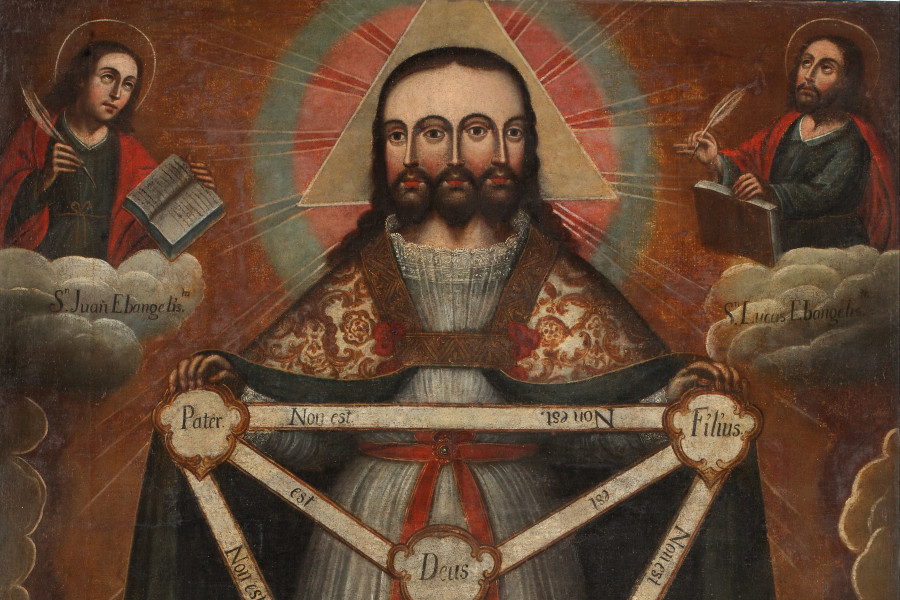How does this encounter make you feel?

The Holy Trinity faces St John and St Luke ,
c. 1760
-
Bright emotions
-
Not at all Extremely
-
-
Quiet emotions
-
Not at all Extremely
-
-
Heavy emotions
-
Not at all Extremely
-
-
Sombre emotions
-
Not at all Extremely
-
Compare yourself to others
Choose different variables below, and see the patterns of response reflected in the circle of emotion above. Your responses are the coloured wedges. Others' responses are averaged in the spider graph of lines and dots.

Date: c. 1760
Creator of the image: Anonymous painter of the Cusco School, Peru Date of the image creation: c.1760 Medium: Oil on canvas Encounter depicted: The Holy Trinity in relation This image, called the ‘Triface Trinity’, depicts God with an imposing face with four eyes, three noses and three mouths. This triple face is an anthropomorphic embodiment of the Trinity. The point reinforced by the central character holding the ‘Shield of the Trinity’, a molecular looking formation that describes the unity of the Father, the Son and the Holy Spirit. On either side of the Trinity are two saints holding books: Sn Juan Ebangelis (St John the Evangelist) on the left and Sn Lucas Ebangelis (St Luke) on the right. The typology of this image can be traced to medieval origins, yet it was later prohibited by the ecclesiastical authorities in Europe. These enforcements did not apply in Peru, where the Triface Trinity was considered a graphic embodiment of the Trinity, and thus a potential conversion aid. This artwork is currently held in the Museo de Arte de Lima. This image was painted by an anonymous artist of the Cusco School between 1750 and 1770. Based in Cusco, the historic capital of the Inca Empire, which fell to Spanish conquest in 1572, the School created didactic art in an effort convert the local Incas to Catholicism. Familiar with the work of European art, this School held a distinctive style; with a lack of perspective, lavish gold leaf, prominence of earthy colours and the incorporation of local flora and fauna.